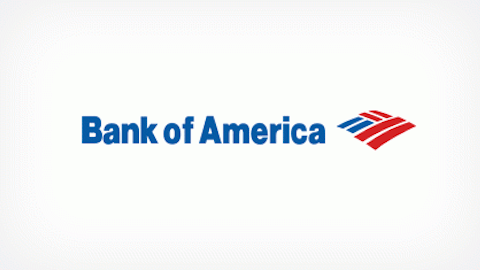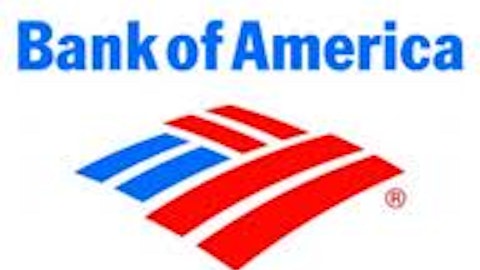The brain is an amazing tool. More capable than any computer on Earth, the human brain has evolved over many millennia, and as part of its development, it has come up with a few tricks. A group of mental shortcuts, called heuristics, allow the brain to go through huge amounts of information in very little time. And while they work well most of the time, relying on these shortcuts can get you in trouble, especially with investing.
One of the worst offenders is the availability heuristic, which allows people to make judgements about the probability of something happening based on how easily they can think of examples. This is your brain operating on the notion that “if you can think of it, it must be important.”Playing right into the hands of other biases, the availability heuristic doesn’t take all of the available information into account before arriving at a decision.
If we look at insurance giant and financial-crisis pariah American International Group, Inc. (NYSE:AIG), it’s easy to see how the availability heuristic can steer you wrong. Below are three examples of how the availability heuristic could trick you out of a great investment opportunity.
History can trip you up
For many investors, the thought of AIG’s involvement in the mortgage dealings that lead to the financial crisis are far too damning to consider the company as an investment. Because it was on the brink of collapse in 2008-2009, many investors will operate under the assumption that AIG has fundamental weaknesses that will keep it from profiting and growing. On the other hand, if an investor were to research AIG’s current business and how it has improved since the financial crisis, they may get a better picture of the company as a real opportunity.
Financial strength
We all remember the debate over AIG’s “too big to fail” status that led to a government bailout. And it may be the fact that the insurance giant was on the verge of failure that keeps investors at bay — but they are missing out on the current financial strength of AIG. After the financial crisis, AIG reduced many of its portfolios of risky investments (i.e., derivatives, etc.) by more than 89% as of 2011 , recognizing that customers and investors would be wary of those investments; instead it favored more traditional options. The company improved its operating income in all segments when comparing the year-to-date numbers from the third quarter 2012 and 2011. AIG also increased its return on equity and book value per share during the same time period.
The achievements made by AIG are not reflected in its share price as the company continues to trade below its tangible book value. As noted money manager Bruce Berkowitz sees it, this creates a great opportunity for investors to get in early and ride the stock back up, as both its price and book value begin to appreciate. And AIG isn’t the only company trading below its liquidation value: Citigroup Inc. (NYSE:C) is currently trading at an 18.6% discount to its tangible book value.
With its current trading price, on top of its strong operations, Berkowitz has said that he expects his largest holding (AIG) to quadruple in value over the next five to seven years.
Pay attention to facts, not just memories
AIG is one of the most respected (and awarded) insurance companies in the nation. While this may not jive with memories of outraged Americans on Wall Street and Main Street, AIG has one of the largest customer bases of any insurance company in the U.S. and serves 130 countries. And with very popular franchises in both property/casualty and life insurance, AIG has had retention rates as high as 93%.
In the P&C market, AIG held the No. 5 spot based on premium market share:
| Insurance Company | Rank in NAIC Market Share Research | Total Written Premiums | % of Market |
|---|---|---|---|
| State Farm | 1 | $52.6 billion | 10.50% |
| Allstate (NYSE:ALL) | 4 | $26.4 billion | 5.30% |
| AIG | 5 | $25.3 billion | 5.06% |
| Berkshire Hathaway | 7 | $17.8 billion | 3.60% |
Source: NAIC 2011 Market Research.
While it may be true that AIG was one of the companies central to the economic collapse, it’s clear that customers have not stayed away from their services as much as investors have.
Printed materials
One of the biggest sources of information we have comes from the media, and the availability heuristic takes much of what we see in the news into account when we’re trying to make decisions. Though your most recent memory of AIG may be the hubbub about lawsuits and other headlines, the company has actually made some serious progress that doesn’t get recognized enough. The news that precipitated the insurer’s latest scandal (suing the government for bailing it out) was that it had in fact paid off the government for said bailout — three years early. But while it’s great that there’s some good news, it’s the bad or scandalous stuff that sticks with us.
One of AIG’s other contemporaries, Bank of America Corp (NYSE:BAC) , knows this point all too well. Embroiled in lawsuits left and right regarding its mortgage business in the (acquired) Countrywide division, B of A has been fighting an uphill battle to regain investor confidence. Though the bank is the best capitalized of its class and has taken great steps to improve its customer relations, the bank continues to suffer from investor uncertainty surrounding its legal troubles. While other banks have had similar legal battles, the frequency of Bank of America’s name in headlines has made it the leading punching bag for financial bears.
The article 1 Terrible Investing Habit You Need to Break originally appeared on Fool.com and is written by Jessica Alling.
Fool contributor Jessica Alling has no position in any stocks mentioned, but you can contact her here. The Motley Fool recommends American International Group (NYSE:AIG) and Berkshire Hathaway. The Motley Fool owns shares of American International Group, Bank of America, Berkshire Hathaway, and Citigroup and has the following options: Long Jan 2014 $25 Calls on American International Group.
Copyright © 1995 – 2013 The Motley Fool, LLC. All rights reserved. The Motley Fool has a disclosure policy.





